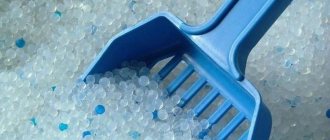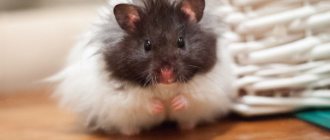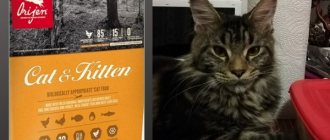What materials can it be made from?
When planning the construction of rabbit hutches, the first thing to think about is the choice of suitable building materials. In principle, any available means are suitable for constructing a simple structure that can protect animals from unfavorable external factors.
In the construction of rabbit farms, wood and metal, galvanized profiles, plastic elements, bricks, clay and even industrial pallets are used. Despite the fact that almost any materials are suitable for use, their choice should be approached with full responsibility.
Wood
Even a novice rabbit breeder can handle making a wooden cage
Wood is used very widely in the construction of rabbit cages. Any structural elements can be made from it. It is from wooden beams that the frame of the future cage is usually made. Floors made of wooden planks are also popular among rabbit breeders.
The main advantages of the material are environmental friendliness and ease of processing . Wooden elements can be easily given almost any shape. You should not lose sight of the excellent thermal insulation properties of wood: in winter a wooden rabbitry will be warm, and in summer it will not be too hot.
Among the disadvantages, it is worth highlighting rapid destruction. Rabbits love to chew on everything around them, so the wooden elements of the interior of the cage are quickly destroyed by rodents. In addition, due to its porous structure, wood absorbs all odors and liquids, so it is not recommended to install a solid wooden floor in a cage.
Important! Insects and humidity also contribute to the rapid destruction of wood, therefore all wooden structural elements must be treated with protective compounds. When choosing such a composition, make sure it is safe for animals.
Metal
Metal is much stronger than wood, but working with it requires a different level of skill
Compared to wood, metal is a more durable material for construction . Rabbits cannot chew through metal elements, they are easy to wash and are not afraid of insects. True, metal processing requires special skills from the master, as well as the ability to handle special tools.
The frame of the future cage is created from metal pipes. Metal is also used for the interior of wooden cages to prevent the natural material from being chewed through. But it is not recommended to make the roof and outer walls of the cage from metal, since in the sun they can become very hot, and in the cold they can freeze, which can pose a threat to the health of long-eared residents.
Galvanized profile
Galvanized profiles are used in combination with other materials. Unlike all-metal elements, strengthening or finishing the cage with a profile does not make the structure heavier, which is especially important for portable mobile rabbit cages.
Plastic elements
Plastic is lightweight and durable, but can release toxic substances in the heat
Plastic pipes can be an alternative to wooden beams and metal pipes. Durable and lightweight material allows you to create universal cages for use in any conditions.
When working with plastic, it is important to keep animal safety in mind. Internal structural elements that can get in the teeth of rabbits should not be made of plastic. The animal can injure its mouth or esophagus from shrapnel, as well as be poisoned by synthetic substances included in the material.
Important! When exposed to extreme heat (for example, in the heat), some types of plastic release toxic substances.
Bricks and clay
Bricks and clay are used to build rabbit hutches mainly in hot regions . The bases for the houses are laid with bricks, and the seams are coated with clay. Such a cage protects animals well from overheating, since the brick has excellent thermal insulation properties.
Net
The walls of rabbit cages are made solid, in the form of a lattice of slats, or they are made of mesh. The most convenient option is considered to be a mesh, which should have medium or small cells and be strong enough.
Slate
The most practical material for making a roof for a rabbit hutch is slate. It will perfectly perform its protective function, without overheating in the sun and without being afraid of moisture.
Available materials
Rabbits are not the easiest animals to care for. For temporary housing or in conditions of critical savings, houses made from scrap materials are suitable. Inventive rabbit breeders adapt old barrels and containers to contain rodents, or assemble multi-story structures from industrial pallets.
Each material has special properties that can be both an advantage and a disadvantage. You should be guided in your choice based on the advice of experienced rabbit breeders, individual conditions (climate, animal breed, etc.) and instructions for popular drawings if you plan to use them.
Do-it-yourself typical rabbit cage
When choosing a cage option for rabbits, you can opt for a Zolotukhin or Mikhailov cage
There are many options for cages for rabbits, which differ in the number of tiers and sections, sizes and the presence of “conveniences” in the form of feeders and drinkers. On the Internet it is easy to find original drawings like Zolotukhin’s or Mikhailov’s designs.
If we talk about a typical cage for adult rabbits, then the optimal parameters will be the following dimensions:
- Length - 120–150 cm;
- Width - 60–80 cm;
- Height - 60 cm.
In order to rationally consume material and for ease of maintenance, it is recommended to build paired cages. In this case, the length will increase to 3 m.
There is no need to save space and make smaller cells. Animals must have enough free space, otherwise they become inactive, get sick and stop producing offspring.
In appearance, a typical cell resembles a block consisting of two sections, each of which can contain one adult individual . Most often in construction, wood and plywood are used for the frame and interior decoration, metal mesh with small cells for walls and partitions, and slate for roofing.
The floor of the cage is rarely made solid. Usually it is assembled from narrow slats or a mesh is used, as this simplifies the care of rodents. Rabbits produce a lot of waste, which falls through a mesh or slatted floor into a specially installed tray. If the floor covering is made continuous, then it will have to be cleaned too often.
Required tools and materials
To make a standard cell you will need the following materials:
- Wooden beams - 10 pieces, size 300x3x5 cm;
- Sheets of plywood - 2 pieces measuring 150x150x0.1 cm;
- Metal mesh - 3 m with a cell size no larger than 15 mm;
- Self-tapping screws - approximately 2 kg. You will need sizes 3 and 7 cm;
- Fittings - door hinges and latches;
- Perhaps wooden floor slats as an alternative to metal mesh.
Tools for work:
- Hand saw or grinder;
- Metal scissors or wire cutters;
- A screwdriver or hammer with nails (instead of screws);
- Tape measure, pencil, level.
Drawing
Drawing of a typical cage for rabbits
The drawing shows all the main structural elements and the dimensions in cm.
Manufacturing instructions
- Construction should begin with the manufacture of the frame. It is assembled from wooden beams, which are sawn according to size and fastened with screws or nails. If possible, it is recommended to deepen the legs of the frame into the ground for greater stability of the structure.
- The floor of the future cage is assembled from slats, between which gaps of 0.5–1 cm are left, or a metal mesh is placed. The closed nesting compartments on the sides of the cage can be made solid by laying down plywood.
- The back and side walls of the cage and the feeder are also made from plywood.
- Having made the doors using metal mesh and leftover wood, you should secure them with fittings.
- At the end of the work, the cage is covered with a roof. Depending on the external conditions, they put a double roof (plywood and slate on top) or simply cover it with slate.
Video: Do-it-yourself typical rabbit cage
Drawing plan
The first step in manufacturing is selecting the desired sample, drawing up a drawing and calculations.
There are many examples on the web with suitable designs for the job. They are made of several floors, because the animals run and climb well. The size and type of cell depend on the number of inhabitants.
For a pair of rodents you will need a house with dimensions of 600x400 mm for the base, and 600-1000 mm for the height. For boys, 1-2 floors are enough: they are calmer and more sociable, and prefer to climb the floors using the owner’s hand. Girls are more mobile and shy; they will be happy with 3-6 floors.
The chance to make a rat cage with your own hands involves interior design of the home.
Places for ladders, booths, hammocks and beds provide rodents with comfort and travel through the racks. It is necessary to select a location for the doors in advance. This will speed up cleaning, help catch the animal when it “escapes” and simplify access to the sick rodent.
As a result, you will get something like the following masterpiece:
Cage for boy rats
This is what a cage for girls looks like:
Before making a house for rats at home, take care of the means at hand.
Cage for decorative rabbits
In addition to the covered part, a cage for decorative rabbits must have an open part.
The more spacious the home for a decorative rabbit, the better. Animal comfort is also provided by the construction of two-story structures or enclosures for walking. Decorative rabbits, as a rule, are kept indoors, so the requirements for thermal insulation and protection from external factors for the design of the home are much lower .
The flooring in a cage for decorative breeds of rabbits should be solid and soft. The surface of the paws of decorative rodents is prone to inflammation and deformation, since it does not have soft pads. The ideal option is a wooden floor covered with soft absorbent material (sawdust, special wood filler, soft straw, absorbent diapers, etc.).
Required tools and materials
Making a cage for keeping decorative rabbits involves using the following materials:
- Sheets of plywood, chipboard or wooden panels: it is better to take extra, focusing on the dimensions of the cage (90x60x45 cm);
- Metal sheet (tin can be used): 90x60 cm;
- Wooden slats;
- Metal mesh: 60x45 cm minimum;
- Self-tapping screws or nails;
- Door fittings.
Tools for work:
- Saw, hacksaw or jigsaw;
- Screwdriver or hammer;
- Nippers or metal scissors;
Drawing
Drawing of a multi-tiered cage for decorative rabbits
The dimensions in the drawing are indicated in centimeters. The size and design of the cage are optimal for keeping one adult individual in a heated room.
Manufacturing instructions
- The construction of a cage for a decorative rabbit begins from the floor. A base measuring 90x60 cm is cut out of chipboard or a wooden board.
- A metal shield of similar dimensions is placed on a wooden base.
- Then, boards for walls measuring 45x60 cm are prepared from wood or chipboard.
- The frame is assembled using nails or self-tapping screws.
- The door is made of wooden slats and metal mesh. The optimal size for the door is 30x30 cm.
- The second tier is made of the same material as the walls and is installed inside the cage.
- The staircase is made of slats, maintaining a width of at least 15 cm, and is installed close to the second tier, carefully securing it.
Making a cage for keeping decorative rabbits is quite simple. Even novice rabbit breeders who have no experience in construction and design can cope with the task. You should not paint the surfaces of the cage with paints and varnishes, as rodents can be poisoned by toxic substances by gnawing on structural elements.
Video: DIY two-story rabbit cage
Advantages and disadvantages
The advantages of a homemade home are: you can independently choose the shape and size of the cage, how many rats will live in it, how many doors will be located in it, what size they will be and their location. You can also consider for yourself whether a pallet or false bottom is needed. In this case, you can create a cage for a specific place in your room.
The disadvantages are: you will have to think through all the details of creating a cell yourself. Also, fantasies about an ideal cage may not always correspond to the result obtained, since not everyone initially has certain construction skills in using the necessary tools. Building a cage will require a lot of effort and personal time.
Design Features
All rabbit cages are designed using general principles, but different types of shelters have their own characteristics. The nuances of the designs depend mainly on the breeds and individuals that the rabbit breeder plans to keep. Any productive farm simultaneously contains several groups of rabbits of different ages or even breeds.
Depending on whether the rabbit hutch will be located outdoors or indoors, you should select suitable materials for construction and plan the dimensions of the structure. Cages can have from 1 to 3 tiers and an unlimited number of sections in length.
Rabbits of different ages (newborns, young animals, adults) require special housing conditions, and accordingly, the cages for them will be different. For example, pregnant females with newborn rabbits are kept in special uterine cages with nests.
The size of the cages should be planned in such a way that the animals have enough space and space. Obviously, cages for giant rabbits and dwarf rabbits will be very different from each other.
Depending on the size of the rabbits
The size of the cage is directly related to the dimensions of future residents
Optimal dimensions for a spacious cage containing a pair of adult rabbits of standard dimensions:
- Length - 120–170 cm;
- Width - 60–80 cm;
- Height - 50–60 cm.
Dwarf and decorative (up to 4–5 kg) rabbits will need more modest conditions:
- Length - 70–90 cm;
- Width - 35–55 cm;
- Height - 30–50 cm.
Giant rabbits will need much more space:
- Length - 85–100 cm;
- Width - 70–80 cm;
- Height - 60–80 cm.
Multi-tiered cells
Productive rabbit breeding involves the simultaneous keeping of a large number of rodents of different sexes and ages. Multi-tiered structures for keeping animals come to the aid of rabbit breeders. The cages are installed in both two and three tiers. Cages with several levels for rabbits are capital structures, which, however, are quite easy to build yourself.
Multi-tier cages based on Zolotukhin’s drawings are popular among rabbit farm owners. They have a number of advantages:
- Capacity;
- The ability to keep all representatives of rabbit families (females, young animals and males) in one place;
- It is convenient to care for animals;
- Zolotukhin cells are quite mobile - they can be moved from place to place.
Depending on the purpose
If there is a female rabbit with her young rabbits living in a cage, then they definitely need to have a secluded place.
Depending on their purpose, rabbit cages are divided into several types, each of which has its own design features:
- Standard cage for permanent keeping. It’s easy to find a drawing of such a cage on the Internet and build a home for rodents yourself. You should pay attention to the size of the cage, which should not be too small, and the safety of the materials;
- The breeding cage should be much more spacious, since several individuals will be in it at the same time;
- A special type of house for a female rabbit with her young or a pregnant female is called a queen cell. A secluded place and warmth are the two main components of the comfort of a pregnant rabbit and her newborn rabbits. As a rule, the queen cell has solid walls, a kind of house that imitates a cramped hole and devices for feeding the mother;
- The cage for young animals meets standard requirements, but is often equipped with an additional enclosure for walking. The opportunity to stretch a little has a beneficial effect on the growth and development of fragile cubs. The walking area is made of metal mesh and often provides the animals with access to fresh grass.
Depending on the climate and time of year
The optimal ambient temperature for rabbits to feel normal is 14–16 degrees. Maintaining a normal climate in the houses and protecting animals from precipitation and wind are the main requirements for the design of rabbit cages .
In large rabbit farms, keeping rodents in winter and summer requires different types of cages. Winter ones are insulated with OSB or other fiber; sometimes they are heated with water.
In regions with a temperate climate without sudden temperature changes, it is possible to keep rabbits year-round in the same portable structures, which are moved indoors when the first cold weather sets in. In the summer, such cells are again moved to the open air.
Secrets of experienced house makers
Before making a house for a rat, it is worth considering several features of certain parameters:
- the height of the structure should be such that the rat cannot reach the ceiling while standing on its hind legs;
- the width and length of the room are made such that the rat can freely fit in a lying position;
- The entrance should be wide, but not too wide, the pet should pass through unhindered, and the person should be able to easily clean inside.
Other recommendations may relate to the type of material (we mentioned this above). As you can see, making a home for a small rodent with your own hands is not only easy, but also interesting.
Choosing a location for installation
Rabbit hutches can be placed both indoors and outdoors. Outdoor maintenance is recommended only for regions with warm climates or in the case of the construction of well-insulated heated structures.
Rabbits do not tolerate high humidity well, so in the open air a place should be chosen that is remote from bodies of water, preferably on a hill. Direct sunlight can also harm the health of rodents, so future rabbit breeders need to provide a special canopy or bush fence.
When placing cages with rabbits indoors, the open part of the structure should be turned towards the windows. This will increase daylight hours for the animals and give them more warmth. Daylight is generally very important for breeding, especially with regard to young individuals. Therefore, in the autumn-winter period it will be necessary to install additional lamps for additional illumination and heating of the cells.
Do not forget about general hygiene in premises where animals are kept. Rabbits produce a lot of waste that needs to be removed promptly. At least once a year it is recommended to thoroughly clean the entire structure and the room itself. This will prevent the proliferation of bacteria and viruses.
Comparison of the best products
For convenience, I have summarized the main characteristics of the cells in a comparative table.
| Name | Dimensions | Additional accessories | Distance between rods | Weight | Maximum number of rats |
| IterZoo Teddy Gigant G089 | 58*38*55 cm | Floors, bowls, wheels, house | 1 cm. | 3.8 kg | 2 |
| Ferplast Jenny | 80*50*79.5 cm | Floors, bowl, automatic drinker, stairs, tunnel | 0.8 cm | 9.2 kg | 5-7 |
| Savic Freddy 2 | 80*50*63 cm | Corner floor, toilet, bowl, drinking bowl, stairs, hammock | 0.95 cm | 7.7 kg | 4-5 |
| Imac Rat 80 Mid | 80*49*63 cm | Two floors bowl, two stairs | 1 cm | 9 kg | 4-5 |
| Ferplast Furet | 78*48*70 cm | Shelf floor, solid ladder, bowl, automatic drinking bowl, hammock, corner toilet | 1 cm | 7.5 kg | 4-6 |
| IMAC Plexi 120 Mid Wood | 120*60*93 cm | Two floors, two houses, three stairs | 1.2 cm | Not specified by the manufacturer | 11-15 |
Arrangement
Feeder options for rabbit cages
In addition to walls, floors and ceilings, housing for permanent keeping of rabbits provides a supply of fresh water and food . Now you can purchase ready-made drinkers and feeders in stores or through specialized websites. However, you can make simple feeders and drinkers yourself.
Some rabbit hutch plans include built-in structures, while some require feeding facilities to be installed separately.
The flooring for decorative domestic rabbits must be soft to prevent the animal from developing pododermatitis. The best options are sawdust or absorbent textile diapers.
Best lists
All cages presented in this rating provide rats with comfortable living conditions and do not pose a risk to the health of the animals. I also identified three favorites that additionally stand out from other models due to price, size or ultimate quality.
IterZoo Teddy Gigant G089 – the best economy offer
A cage from a Polish brand is an excellent solution for a novice rat breeder who does not yet plan to have a large flock. There is enough space in it to keep a couple of animals, in addition, the dimensions of the cage will allow you to easily place a hammock and additional toys for pets in it.
Galvanized rods resist attempts to gnaw them well, and the small distance between them will allow even one-month-old rat pups to live in the Teddy Gigant G089. The cage is durable, easy to disassemble for cleaning, and in addition, it compares favorably with other models in the rating at an affordable price.
IterZoo Teddy Gigant G089
IMAC Plexi 120 Mid Wood – the best solution for breeders
The Model 120 Mid Wood is an excellent solution for the rat kennel owner who needs a large main cage that can accommodate a large flock of rats. It provides sufficient living space for up to 11 males or 15 females, and the thoughtful arrangement of the doors makes it easy to clean, add or remove pets, change water and add food.
The height of the tray is increased due to transparent walls that do not interfere with the view. Thanks to them, the floor around the cage will remain clean, even if the whole flock of rats starts an active fuss. This will be an additional advantage for breeders, as it will reduce the time spent on servicing pets.
IMAC Plexi 120 Mid Wood
Ferplast Furet - the best quality and equipment
Ferplast brand cages are considered by many breeders to be the best on the market. The Furet model is an ideal solution for the owner of a medium-sized flock. Due to the fact that the size of all parts is adjusted to the millimeter, the cage is easy to assemble and disassemble. It is “escape-resistant”, durable, and made of non-toxic materials.
An additional advantage of the model is its rich equipment. A feeder, water bowl and other accessories are supplied with the cage, which allows you to move in pets immediately after its assembly.
Ferplast Furet
How to crate train a rabbit
If the cage is comfortable, the rabbit will get used to it quickly enough
In their natural environment, rabbits live in burrows. When keeping animals productively, providing them with adequate privacy is very difficult. If a rabbit hutch is not constructed correctly, has sharp interior edges, is small in space, or is located in a noisy environment, the animals will experience stress that will adversely affect their health and reproductive performance.
Accustoming a rabbit to a new home is quite simple: you just need to provide it with the most comfortable living conditions.
Rabbit breeding is a popular and profitable business in rural areas. Animals are kept in special cages that you can make yourself. Using the information and tips from this article, anyone, even the most inexperienced rabbit breeder, will be able to design the right cage that is ideal for their rabbits.











